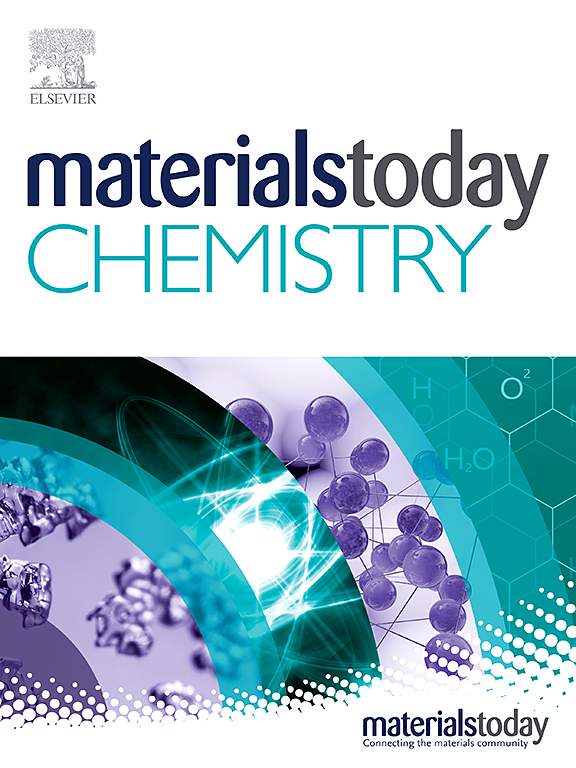基于 MoS2 的类地自转和磁导航纳米机器人,用于磁共振成像、癌细胞成像和治疗
IF 6.7
2区 化学
Q1 CHEMISTRY, MULTIDISCIPLINARY
引用次数: 0
摘要
微型机器人有望彻底改变新兴生物医学应用中的大规模运输系统,然而它们不稳定的运动给控制其运动(尤其是体内运动)带来了巨大挑战。在这项研究中,我们推出了基于 MoS 纳米流(NFs)的高柔性自旋转纳米机器人,可在磁场下出色地控制其运动,用于癌细胞成像和治疗。这些被称为 MNBOTs 的纳米机器人是利用 MoS 表面丰富的二硫键,通过聚合物连接剂将 NiFeO 纳米颗粒(NPs)与预成型的 MoS NFs 共同缀合而成。体外实验展示了 MNBOT 对速度、轨迹和曲率的精确控制,并能在电磁导航下无缝适应磁通密度的变化。此外,在谷胱甘肽/二硫苏糖醇的作用下,二硫键崩解,MNBOT 能够在肿瘤环境中成功释放 NiFeO NPs,从而确保 MNBOT 在癌症治疗后的回收。此外,我们还利用 MNBOT 的光热生成和顺磁特性,将其用于体内外临床化疗-光热疗法(PTT)和磁共振成像(MRI)。化疗-光热疗法的联合效应对 MDA-MB-231 癌细胞具有显著的细胞毒性,凸显了 MNBOTs 的协同潜力。MNBOTs 集成了多种功能,包括远程磁导航、光热疗法和核磁共振成像,为满足迫切的医疗保健需求提供了一个多功能平台,因此在未来的治疗和诊断应用中具有巨大的潜力。本文章由计算机程序翻译,如有差异,请以英文原文为准。
MoS2-based earth-like self-rotating and magnetically navigated nanorobots for magnetic resonance imaging, cancer cell imaging, and therapy
Microrobots are poised to revolutionize mass transport systems in emerging biomedical applications, yet their erratic motion poses a significant challenge in controlling their movements, particularly in-vivo. In this study, we introduce highly flexible, self-rotating nanorobots based on MoS Nanoflowers (NFs), offering superior control over their movement under magnetic field for cancer cell imaging and therapy. These nanorobots, termed MNBOTs, are constructed by embellishing pre-formed MoS NFs with NiFeO nanoparticles (NPs) using polymeric linkers, capitalizing on the abundance of disulfide bonds on the MoS surface. In-vitro experiments showcased MNBOT's precise control over velocity, trajectory, and curvature, adapting seamlessly to changes in magnetic flux density under electromagnetic navigation. Moreover, MNBOTs were able to release NiFeO NPs successfully in the tumor environment, facilitated by the collapse of disulfide bonds in the presence of glutathione/dithiothreitol, thus ensuring MNBOT's retrieval post-cancer therapy. Furthermore, we leveraged the photo-heat generation and paramagnetic features of MNBOTs for chemo-photothermal therapy (PTT) and magnetic resonance imaging (MRI) in ex vivo clinical settings. The combined effect of chemotherapy-PTT demonstrated remarkable cytotoxicity against MDA-MB-231 cancer cells, highlighting the synergistic potential of MNBOTs. The integration of diverse functionalities within MNBOTs, including remote magnetic navigation, photothermal therapy, and MRI, presents a versatile platform for addressing pressing healthcare needs, thus holding immense potential for future therapeutic and diagnostic applications.
求助全文
通过发布文献求助,成功后即可免费获取论文全文。
去求助
来源期刊

Materials Today Chemistry
Multiple-
CiteScore
8.90
自引率
6.80%
发文量
596
审稿时长
33 days
期刊介绍:
Materials Today Chemistry is a multi-disciplinary journal dedicated to all facets of materials chemistry.
This field represents one of the fastest-growing areas of science, involving the application of chemistry-based techniques to the study of materials. It encompasses materials synthesis and behavior, as well as the intricate relationships between material structure and properties at the atomic and molecular scale. Materials Today Chemistry serves as a high-impact platform for discussing research that propels the field forward through groundbreaking discoveries and innovative techniques.
 求助内容:
求助内容: 应助结果提醒方式:
应助结果提醒方式:


